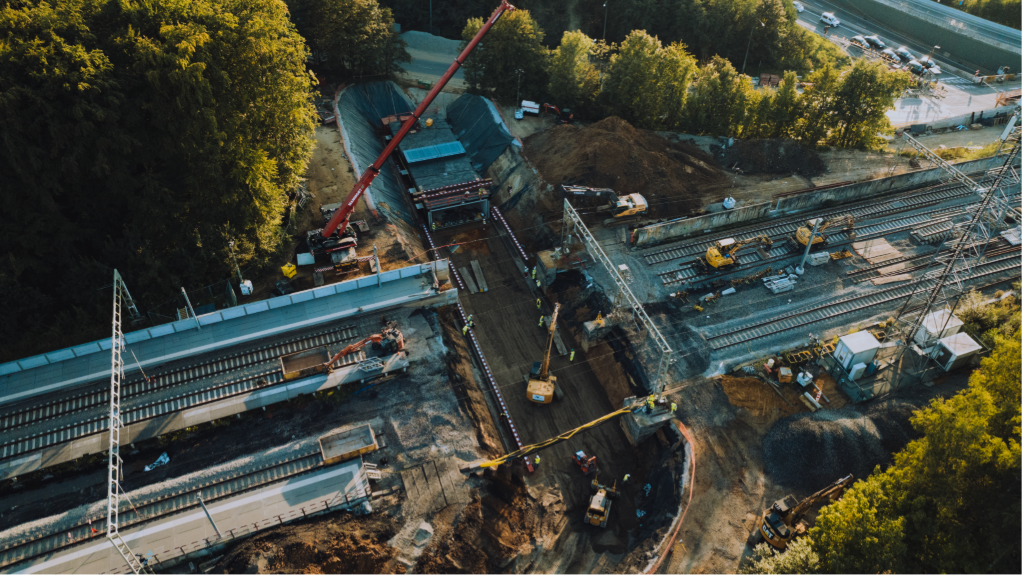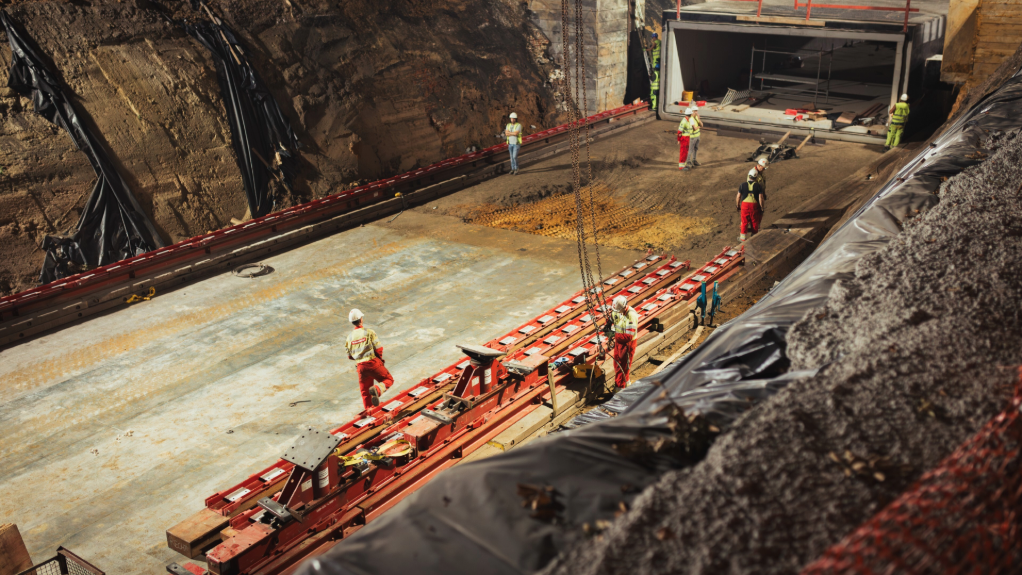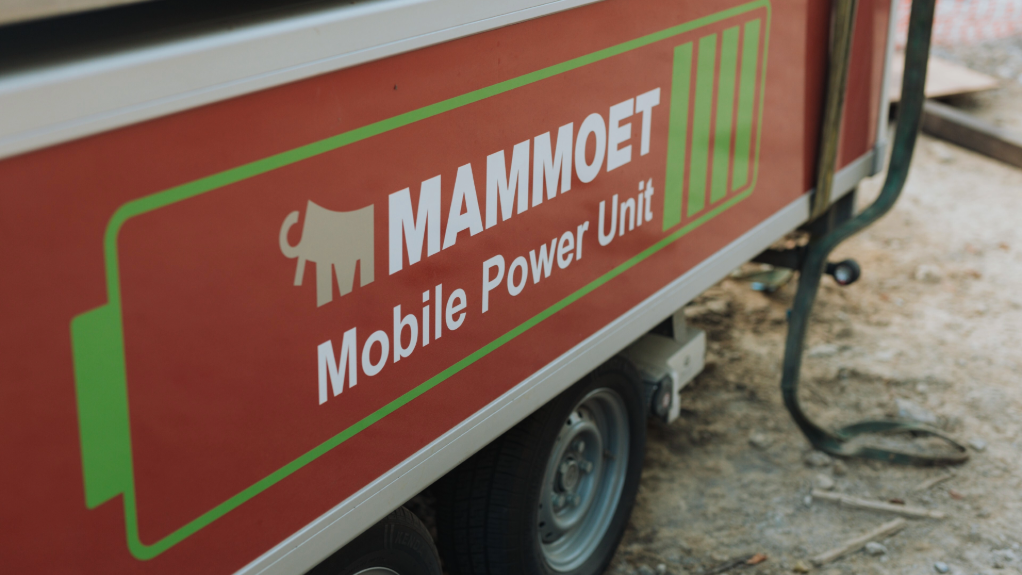A standard skidding operation evolved into an opportunity for heavy lifting solutions provider Mammoet to showcase its ability to reduce the carbon footprint of civil projects while minimising disruption.
Mammoet was tasked by multidisciplinary infrastructure company Stadsbader Contractors to lift and skid an 850 t concrete tunnel section 40 m beneath railway lines in Belgium.
Hydraulic jacks were employed to lift the concrete tunnel section from the ground. Once sufficient ground clearance was achieved, hydraulic cylinders moved the section across 40 m of Teflon pad-equipped skid tracks to its final destination.
The hydraulic power for this operation was supplied by an electric powerpack coupled with a battery, providing the necessary energy for the task.
The company determined that the project could be completed with zero emissions, though to achieve this, Mammoet's engineers employed a combination of traditional skidding equipment and innovative battery-powered technology.
The project required precise calculations and implementation to lift and skid the 850 t tunnel section, measuring 25 m x 8.5 m, along 40 m to reach its destination below a railway track near Brussels.
The operation also had to be carried out to a time-critical deadline, with minimum disruption to train users and before the Monday morning commute began.
To determine what was needed to carry out the job, Mammoet engineers executed several smaller scale projects, such as transformer installations, which served as feasibility tests before moving on to the large-scale Belgian project.
After preparations for the operation were put in place, the skidding procedure was completed in under an hour and 2.5 hours ahead of the estimated schedule.
The electric powerpack, or mobile power unit, is powered by recycled batteries, with a maximum capacity of 50 kWh. It weighs 1.4 t and has loading capacity for an additional 1 t of auxiliary equipment through its roof rack.
It accepts standard inputs and outputs at 16 A, 32 A or 63A.
Its battery can also be charged using solar energy, further increasing the sustainability of operations.
The sustainable mobile power source enabled Mammoet to not only perform the special device skidding operation with zero emission, but also off the grid, which the company explains means the solution is transferable to even relatively remote locations.
Safety Through Sustainability
The use of combined technologies in the all-electric tunnel skidding process exemplifies Mammoet's leadership in enhancing the safety and sustainability of heavy lifting operations, the company says.
It resulted in many positive gains for the customer, including improved on-site safety owing to reduced noise levels during the operation, and less impact on the surrounding environment owing to the absence of on-site emissions – all while maintaining the same strict timescale as normal.
The improved working environment received a positive response from the field experts working with these newly combined technologies.
“We have demonstrated that through innovative engineering and combining new and existing technology we have the ability to execute zero emission heavy lift projects for our customers – and that’s the future,” says Mammoet Europe improvement and innovation manager Pascal Eeken.
He adds that the operation sets a new standard for carrying out heavy lifting projects using specialist equipment for jacking and skidding, in a safer, sustainable and more eco-friendly way.
“By proving out the switch to zero-emissions electricity for civil projects, Mammoet is leading the way in helping customers to reduce the carbon footprint of their operations and supporting more sustainable development – both for civil projects and elsewhere,” he concludes.
Edited by: Nadine James
Features Deputy Editor
EMAIL THIS ARTICLE SAVE THIS ARTICLE
ARTICLE ENQUIRY
To subscribe email subscriptions@creamermedia.co.za or click here
To advertise email advertising@creamermedia.co.za or click here

















